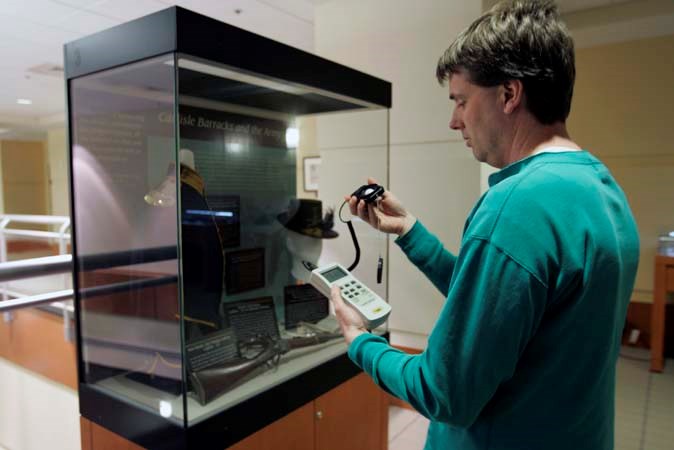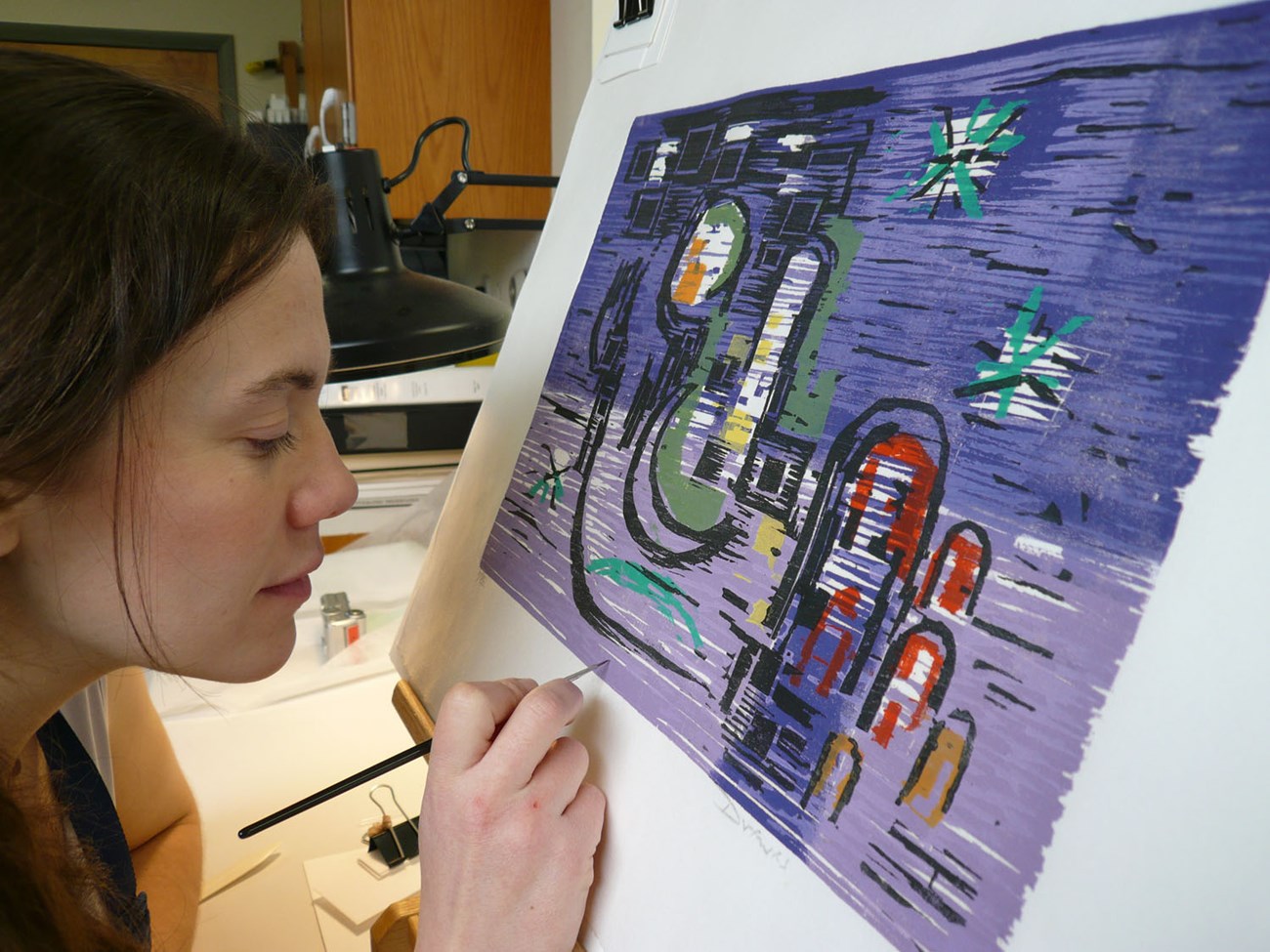Last updated: July 8, 2021
Article
Foundation of the American Institute for Conservation Catalog Wiki
FAIC Conservation Catalog Wiki
Organization: Foundation of the American Institute for Conservation (FAIC)
Principal Investigator: Eryl Wentworth, AIC/FAIC Executive Director
Project Team: Eryl Wentworth, AIC/FAIC Executive Director
Eric Pourchot, AIC/FAIC Director of Institutional Advancement
Brett Rodgers, AIC Publications Manager
Paul Messier, AIC Executive Board Director of Communications
Luisa Casella, Andrew W. Mellon Research Scholar, The Metropolitan Museum of Art
James Cocks, graduate student at Columbia University
Date of Final Report: November 17, 2009
Executive Summary
The National Park Service awarded the Foundation of the American Institute for Conservation (FAIC) a Preservation Technology and Training Grant (PTT Grant) for the proposed project entitled “The FAIC Conservation Catalog Wiki.” The grant period was originally set to begin June 1, 2008 and end June 30, 2009; the end date was extended three months to September 30, 2009.
The purpose of the grant was to create a wiki website based on the AIC Conservation Catalogs. The Catalogs are reference manuals that include descriptions of conservation procedures. The project proposed to transfer the existing paper-based method of editing these texts into a type of online, collaborative knowledge base known as a wiki, allowing multiple users to enter and edit information. The proposed software engine was based on the same open-source software developed by the Wikimedia Foundation, which supports the widely used Wikipedia website and many other professional, commercial, academic, and personal wikis.
The project was carried out successfully according to the steps outlined in the proposed plan. The final site, www.conservation-wiki.com, was created within the grant period, and the Catalogs were converted and migrated into the site. The site launched at the close of the grant period and has been widely publicized since that time.

Introduction
AIC Conservation Catalogs are reference manuals that include descriptions of conservation procedures. This project proposed to transfer the existing paper-based method of editing these texts into a type of online, collaborative knowledge base known as a wiki, allowing multiple users to enter and edit information. The software engine is based on the same open-source software developed by the Wikimedia Foundation, which supports the widely used Wikipedia website and many other professional, commercial, academic, and personal wikis. This application has proven to be reliable, versatile, sustainable, and perfect for collaborative authoring projects.Although the Catalogs were already structured within themselves, there was a need to devise a model that allowed the transfer of documents from the four specialty areas into a single, compiled resource. Also, a framework was desired that would be flexible enough to allow the expansion of the catalog wiki to include additional specialties.
The project schedule included seven general steps: definition of the structure; creation of guidelines and policies for use; creation of the website; testing the structure with different catalogs; conversion of the Catalog content; quality control and testing; dissemination of the online knowledge base.
The project was initially proposed to last twelve months from acceptance of grant application to launch of the live wiki. A three-month extension of the grant period was granted, setting the completion date at September 30, 2009.
Methods and Materials
In the first two months of the grant period, a working group was assembled, composed of FAIC and AIC Staff, members of AIC’s Board of Directors, Specialty Group Catalog editorial representatives, and other AIC members with knowledge of wiki technology. Over the course of several phone conferences the group reviewed existing Catalogs and production methods; outlined a desired structure for the wiki; established a basis for editorial guidelines; and began planning ahead for ways in which the completed wiki can be used to create new Catalog chapters in native wiki form.
Following these initial meetings, data was collected on each of the existing Catalog editions. Basic publication information for each was recorded, as well as a description of the formats in which each text is available. Meanwhile, follow-up conference calls were held to begin developing editorial guidelines. The guidelines take into consideration the stipulations of the Grant Agreement, the practices of the Specialty Group Catalog editors, and the experience of wiki developers and users.
Also during the first quarter of the grant period, AIC selected TerpSys, a Washington, D.C.-area website development firm, to create the wiki site. TerpSys was chosen because of their experience creating wiki sites, as well as their work re-designing AIC’s main website during the same period. Due to their involvement with the latter project, they were able to create a wiki site that integrates smoothly with AIC’s main site. AIC accepted TerpSys’ proposal for creation of the Catalog wiki and work proceeded.
The proposed software engine, MediaWiki, was based on the same open-source software developed by the Wikimedia Foundation, which supports the widely used Wikipedia website and many other professional, commercial, academic, and personal wikis. This application has proven to be reliable, versatile, and well suited to collaborative authoring projects. Additionally, MediaWiki offers multiple levels of access to its sites. This allows AIC to assign designated wiki editors access to actually edit the text, while the general public can view the wiki material and even register and log in to comment on the text.
TerpSys and AIC Publications Manager Brett Rodgers collaborated to establish a website to host the wiki. The Internet Service Provider SiteGround was chosen to provide the general site hosting, based on its record of integrating MediaWiki-based sites. TerpSys’ team configured the MediaWiki software on the new site, www.conservation-wiki.com. Additionally, they applied graphic styling to match the site’s look and feel to AIC’s main website brand, based on its primary website, www.conservation-us.org.
While the wiki site was being established, AIC staff collected any available electronic versions of the print Catalogs. In some cases, print production of the Catalogs involved using still up-to-date electronic file formats; these were favored because they were easier to migrate into the wiki than print-only Catalogs. Most of the Catalogs existed only in print form, and these were scanned to be ready for conversion to the wiki.
The wiki project stakeholders agreed that the Catalog chapter content on the wiki should resemble the print versions in terms of formatting as much as possible. Furthermore, the MediaWiki software utilizes a simple but unique mark-up language to apply formatting to content. Therefore, FAIC contracted Aptara, a print media company, to convert the thousands of pages of Catalog content from their original form (as scanned documents, or in some cases various electronic file formats such as Microsoft Word and HTML) into the MediaWiki format.
Aptara was also charged with formatting the wiki content to match the original versions, to upload any accompanying images and tables, and to correct spelling or other issues that may have been caused by the scanning and conversion. Specialty Group editorial representatives were asked to check the converted material to ensure that the material was migrated successfully. Aptara was responsible for correcting any initial mistakes that may have been due to the content migration; in the future, wiki editors will be expected to make all corrections and updates.
In the last quarter of the grant period, while the content migration was being finalized, several training sessions were offered to the Specialty Group editorial representatives, led by TerpSys representative Stuart Holland. The purpose of the training sessions was to introduce the online formatting techniques used in the MediaWiki software, enabling the editors to begin actively using and developing the wiki. Additional training sessions will be needed, as the number of new active editors increases.
Creation and preparation of the site was completed in time to launch the site immediately after the grant period expired. In order to disseminate knowledge of the wiki as widely as possible, AIC staff implemented a multi-faceted approach: a press release was created, distributed widely, and posted online; a blast-email was sent to the AIC membership; the wiki working group members were asked to post to relevant email listservs; a notice was posted on the Conservation DistList; AIC utilized social media (primarily, Facebook and Twitter) to post updates throughout the wiki development process, including the launch; and the wiki site was linked to the AIC main site, while postings on several pages of the site call attention to it.

Results and Discussion
The FAIC Conservation Catalog Wiki project was completed during the grant period. The project was carried out as proposed, with little deviation from the planned steps. The working group gathered by FAIC and AIC staff proved to be knowledgeable and enthusiastic to see the project through. Their involvement with all steps of the process significantly contributed to its overall success. After the wiki site was built, all four of the Conservation Catalogs, consisting of over 1000 pages in their print versions, were successfully converted to the MediaWiki mark-up language and migrated to the new site.
As hoped, the wiki software proved to be a versatile platform for hosting the catalogs online. The four Catalogs, originally published using diverse formatting and production methods, are now available for a larger audience using a single electronic format. Yet they still retain individualized features according to the needs presented by the content. Significantly, the text can now be augmented with full-color illustrations and cross-referencing via hyperlinks, and can be edited, expanded, and updated indefinitely.
The Catalogs are now easily accessible to a much larger audience, including the general public. All wiki users are able to view the full content; by registering on the site, they can also post comments on the text, which will serve as an additional aid to editors. The text is searchable and browse-able outline pages were created for each of the major content areas to enable site users to easily find desired materials.
In order to maintain the integrity of the information and to ensure stylistic consistency, editorial access is limited to representatives chosen by the Specialty Groups. These representatives are able to log in to the site and make direct changes to the wiki material. The editors have already begun benefiting from the wiki technology in order to develop and update the entries. Meanwhile, new catalog entries are currently being planned in native wiki form.
Conclusions
In conclusion, the proposed FAIC Conservation Catalog Wiki project was successfully carried out, enabling the implementation of a collaborative wiki web site based on the AIC Specialty Group Catalogs. The site, www.conservation-wiki.com, meets the objectives that were initially outlined: transfer of the paper-based Catalogs into an online, collaborative website using the MediaWiki software. The site was created and configured, guidelines for use of the site were created and made available on the site, all of the catalogs were collected and transferred into the wiki format, the site was checked, and finally was announced and disseminated. Plans for expanding the future use of wikis in the field of conservation is already underway based on the positive experiences gained in this project.
Acknowledgments
FAIC would like to extend its sincerest gratitude to the National Center for Preservation Technology and Training for its generous support of this project. In particular, Mary Striegel offered continuous guidance throughout the process. FAIC thanks the members of the wiki working group and the AIC Specialty Group representatives who contributed to the success of this project. In particular, Luisa Casella, Andrew W. Mellon Research Scholar in Photograph Conservation at the Metropolitan Museum of Art, deserves our gratitude for the energy and effort she brought to the project.
